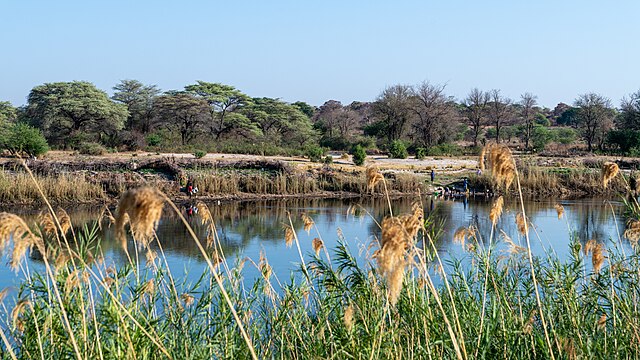The maize harvest on Musese farm in Kavango West is underway with expectations to reap 4,000 tonnes. This at a time when maize prices in Namibia are inching up.
Harvesting began at the end of April, about 6 months since the scheme sowed white maize in November 2023.
Operated by Winni Metzger, Musese is a nationally important greening scheme whose roots go back to 1977. It combines 15 massive maize plantations that house 103 permanent employees and 200 seasonal workers.
Its biggest score is the agility to combine sustainable large-scale farming with small-scale agriculture. Currently, the nine small-scale farmers at Musese who planted their maize late are relying on the Okavango River to irrigate.
After each harvest, Metzger mobilizes 700 heads of cattle to trample and graze on the leftover foliage for soil recycling. This ensures that during the next planting, the clay soil will have combined with dung to make compost manure.
The current harvest, however, coincides with a time when maize prices are high due to dry conditions in the Kavango region.
Costly Maize Versus Low Production
On March 1, 2024, the Namibian Agronomic Board (NBA) reported increases in January 2024 prices over those of December 2023.
While a farm-gate’s 4-pack of sweetcorn cost N$16.83 ($0.91) in late 2023, it was at N$19.00 ($1.02) in early 2024. So was the average retail price for sweetcorn, which rose from N$43.61 ($2.35) to N$48.24 ($2.60) between December and January.
Consumption of maize in form of maize flour in Namibia often outpaces production and partially contributes to pricey grain.
In 2022, the country harvested an estimated 150,000 tonnes of white maize, against a demand of 203,000 tonnes.
Forecasts indicate that by 2026, Namibia will need 132,000 tonnes to meet home consumption. Production fluctuates each year and may not be equal to demand. For instance, while white maize production soared in 2022, in 2021 it had leveled off at 66,640 tonnes despite high demand.
Musese is among seven governmental schemes in Kavango that produce large-scale white maize under irrigation to meet this huge demand.
